'How to peel an onion without crying' and
'How to chop an onion without crying'
infer that I am about to explain 'how'.
Bold statements, if you take these to be
statements of intent. Fortunately,
they are statements that I have
proven to myself, can be upheld.
However if you do not believe me,
or do not wish to test the theory,
you have alternatives..........

How To Peel An Onion Without Crying And Chop It Too
by humagaia
'Peel an onion without crying'!?: impossible. 'Chop an onion without crying'!?: impossible. Actually, I have methods that can do both. Don't believe me?........
Free Video Series Reveals How To Launch Recession Proof Income Streams From Scratch

Pick your chopped onion product from the carousel
This is the guaranteed way to prevent your eyes watering
 |  |  |
| Kirkland Signature Chopped Onion Only $5.12 | Frontier Chopped White Onion, Allium ... | Frontier Natural Products, chopped W... |
 |  | |
| Heinz Chopped Onion, 0.32-Ounce Singl... | Badia Spices inc Chopped Onion, 14-Ou... |
Onion Wiki
The Onion
'Onion' in the context of this 'How to' is a generic term describing any member of the allium family whose bulb has culinary uses.
When reading the word 'onion' you could replace it with:
- Yellow onion
- Red onion
- White onion
- Spanish onion
- Pickler onion
- Pearl onion
- Bermuda onion
- Cipollini onion
- Vidalia onion
- Egyptian onion
- Maui onion
- Tree onion
- Shallot
Those whose bulbs are not used alone, such as scallions, Welsh onions, leeks etc are not covered in this 'How to' as the bulbs or bulblets do not lend themselves to this method.
Onion Anatomy
For the purposes of this 'How to peel an onion without crying' article, the parts of an onion that are of interest are marked on the picture opposite.
These are:
- Growing tip
- Root section
- Outer skin
- Membrane interface.
The first three are pretty obvious. But why do we need to be aware of the membrane interface?
When an onion is peeled or sliced there is an interaction between two separate membranes. We all see the main sections of an onion, the juicy parts. But there is also a very thin 'skin' between each section. You will recognise it as the thin film that adheres to the outer part of the onion when it is peeled. It is the interaction between these two membranes which causes an irritant gas to be produced, that stimulates eye irritation, and tear formation.
Onion chemical reaction
In order to prevent the cry response from happening when we peel an onion, we must first understand the mechanism by which that mechanism is triggered.
As above, it is a gas that causes the irritation. The gas is produced when we cut both membranes of an onion in a way that causes them to interact.
The production of the gas is the defence mechanism of the onion. It does not want to be eaten by grazing animals. When it is bitten, the two membranes interact, and hopefully from the onions point of view, it causes such an irritation that the grazer will not choose to eat onions again.
Don't cry
 Onions can make you cry Pixabay Cartoon |
There are many methods that can diminish the possibility of these gases being formed. Some of them can be read about in the Wiki above.
The methods either involve
- suppression of, or dissolving, the gas when produced, or before production.
- limitation of the reaction between the membrane chemicals that produce the gas.
My method is of the latter kind.
Love this method
 Smile |
Peeling an onion without crying
Method
The following method should be undertaken with the sharpest small knife you have available.
The sharper the knife the better.
Reason:
- to limit the amount of cells being cut, so that there is as little interaction between the membranes as possible.
Follow these instructions and you will not cry:
- Take onion in the hand with which you do not use a knife for cutting (it may be prudent to have a tea-cloth between the onion and your hand, for safety sake).
- Hold the onion with the root section facing away from the palm of your hand.
- Insert knife, at a 30 degree angle, 2mm from the edge of the root, and rotate onion so that the knife cuts all of the root section away. Dispose of root.
- Do same for the growing tip, having placed the onion in the palm of your hand with the tip facing outwards.
- It is likely that a part of the outer skin will have peeled back at this point. Place knife at a 60 degree angle to the onion, with the tip of the knife piercing through the first juicy membrane, and cut from top to bottom of the onion. This will allow you to remove the first layer in its entirety. Do so. This portion is the toughest part of the onion and may not cook well, so you are best without it.
- Immediately place onion in ice-cold water, submersing it at first.
- Repeat for next onion.
Maximum protection
 Put on sunglasses |
If you want onion rings:
- Remove onion from ice-cold water.
- Slice small section from the edge of the onion, so that it will sit upright on your chopping board, without rotating.
- Use sharpest knife to slice down through the onion.
- Replace onion rings in the ice-cold water.
- Repeat for each onion.
It may help to wear sunglasses.
Chopping an Onion without Crying
My way
The same basic chemistry should be applied as for 'peeling an onion without crying'.
That is to limit the interaction between onion membranes and to suppress the chemical reactions as best as possible.
The ice-cold water will suppress the chemical reaction.
Using your best sharpest small knife will limit the membranes that are damaged such that they do not interact with each other as much.
Gordon Ramsey - How to Chop an Onion
The method for chopping onions so you do not cry, is as follows:
- Remove a peeled onion from the ice-cold water.
- Place on chopping board with the bottom of the onion, where the root used to be, flat on the chopping board.
- Slice onion in two.
- Place the halves of the onion cut-side down on the chopping board. If it is a large onion, or you are slow chopping, then place one half onion back in the ice-cold water.
5. Now as fast as is safe, chop the onion into slices, place back in the water.
6. Repeat for all onions that you need to chop.
7. If you require smaller pieces, then remove slices from water, and chop further. Then replace in separate bowl of cold water.
8. Repeat as necessary.
In case of failure of method, ensure at least one eye is protected from the worst of the effects.
Protect at least one eye
 Close one eye |
Chopped onion products from elsewhere
UK, Canada, France, Deutschland, España, Italia, 日本, 中国
Onion Choppers
If you don't want to go to all the trouble of following my method.
 |
| Progressive International Onion Chopper |
 |
| Progressive International GPC-4000 Fruit and Vegetable Ch... |
 |
| Black & Decker EHC650 2-Speed Food Chopper with 3-Cup Bowl |
Guarantee
This works for me. It should work for you. However, there is no guarantee. But you may as well give it a try. You have nothing to lose. I am not charging for this advice. So sue me, my life already! I am only trying to help you to chop onions without crying. (and without cutting your fingers off, or piercing your hand).
Disclaimer
This advice is given without prejudice. No animals were used in this experiment.
Use blunt knives if you are prone to slippage.
Use industrial, chain-mail gloves whenever possible. Protective visor is recommended.
Take advice from your medical practitioner before attempting to undertake this type of physical activity, in case it brings on wind. You have been warned.
The advice and opinions of this author should not be taken as advice or opinions given by Wizzley.
Wizzley dissociates itself from this advice entirely!
You might also like
Easy and Delicious Kale RecipesThere are lots of ways to enjoy this popular superfood. Here I'll share a few...
Alternatives to Wheat Pasta / Wheat-Free NoodlesDo you love pasta but want to cut down on wheat? If so, you may want to try s...
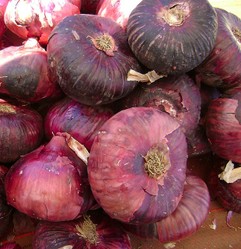

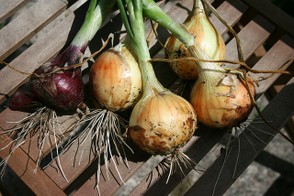
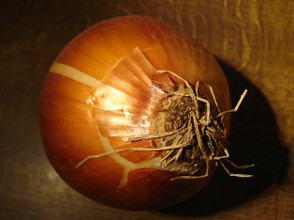
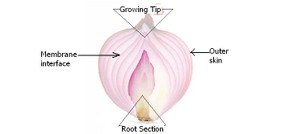


 Gold Barson 10/19/2017
Gold Barson 10/19/2017
 Creating My Own Websiteon 02/04/2021
Creating My Own Websiteon 02/04/2021
 Weights and Measures of Gold Barson 10/20/2017
Weights and Measures of Gold Barson 10/20/2017
 Types of Goldon 10/20/2017
Types of Goldon 10/20/2017
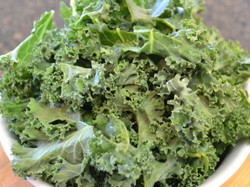
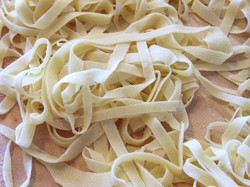
Comments
@K dehydrated, chopped and jarred, frozen...... all are great ways to pay more than is necessary for onions. In my frugal existence cost is everything. I can get a 7lb sack of onions for £1 ($1.60) - I guess that is the approximate cost of the dehydrated ones you buy. If you don't mind swelling the coffers of big business, then I suppose 'why not?'.
Thanks for the tips on using and cutting onions. I like the sweet kind of onions and the purple. I also like cooking with the hydrated kind, why not it's just so simple, taste good and is very cost effective. Great way to peel on onion. :)K
@Angel - not sure how that could help! Maybe having the mouth open slightly meant breathing in the gas produced before it reached the eyes. Dunno! Rhanks for sharing.
My Grandmother would put a pencil in her mouth and bite down on it while chopping onions. Crazy I know.. but it seems to work. Not real well but better than without. LOL.. Will try your method next time I am cutting up onions.
@TPA - don't forget to wash your hands afterwards.
Great advice - I am so gonna try some of these tips next time I chop up onions. I am always crying when chopping and now I know why and what to do - thanks bunches !!
@dusty Why not make sue and do both!
I eat a lot of onions - Vidalia mostly - and I always run them under cold water to avert teary eyes. I will try your method next time - sounds good.
Hi, Brian. There are many methods that are efficacious and yours are no exception. Perhaps I should have added a dual module so that people could let me know their method.
My view is that it is not only the root section that is the main culprit, but equally the growing tip. Getting rid of these two parts completely, without cutting into them, has the most chance of limiting the chemical reaction.